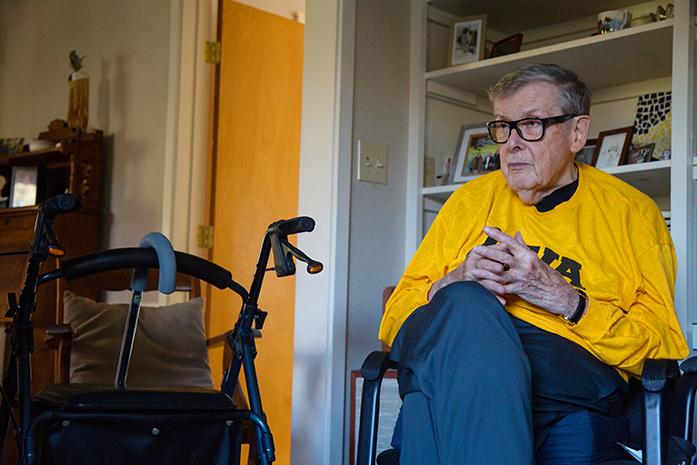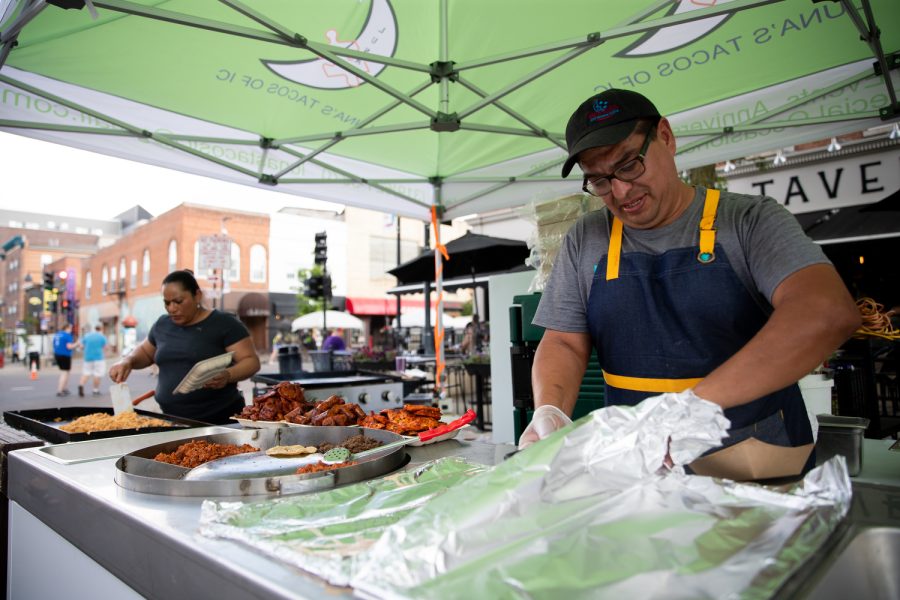In light of his spring retirement we take a look at the illuminating life and career of former UI President and law professor, Willard “Sandy” Boyd
By Tessa Solomon
Cars idle on Iowa City’s stretch of I-80, blaring their horns. The highway has been shut down by student protests, the crowd lobs bricks onto the street from a high overpass. No one is hurt, but the message is well-received.
This is not the recent, peaceful protest over the presidential election but a scene of turmoil, spurred by outrage over the Vietnam War.
For weeks, the University of Iowa campus had been alit with protests. Students chant on the Pentacrest, thrusting hand-painted signs upward. The crowd spill into the shuttered downtown streets. Some broken shop windows testify desperation for representation, for a true voice against the war’s senselessness.
Willard “Sandy” Boyd, now retired in his River Street home, was then the UI president.
Then, in the crimson glow of near-twilight, a thousand-thick crowd filled the Pentacrest, Sandy Boyd, from St. Paul, Minnesota, entered the thick. He spoke to the students along the way to the Pentacrest steps, maybe clasping hands. There, he made a speech. It was not the first or last; it did not shame or disperse those assembled. Sandy spoke with them, not to them. Across the street shattered windows watched, silent and forgiven.
Despite spikes of violence, the UI avoided the tragedies of Kent State and Jackson State. Maybe because the UI had Sandy Boyd to lead students through the storm. Then, in his 40s, he was not yet the pioneering director of Chicago’s Field Museum or recipient of a National Humanities Medal of Honor. He is widely considered to be the last great UI president. A definitive biography would be exhausting, and I came to learn the small things, such as his handwritten notes — “Sandygrams” — were most telling.
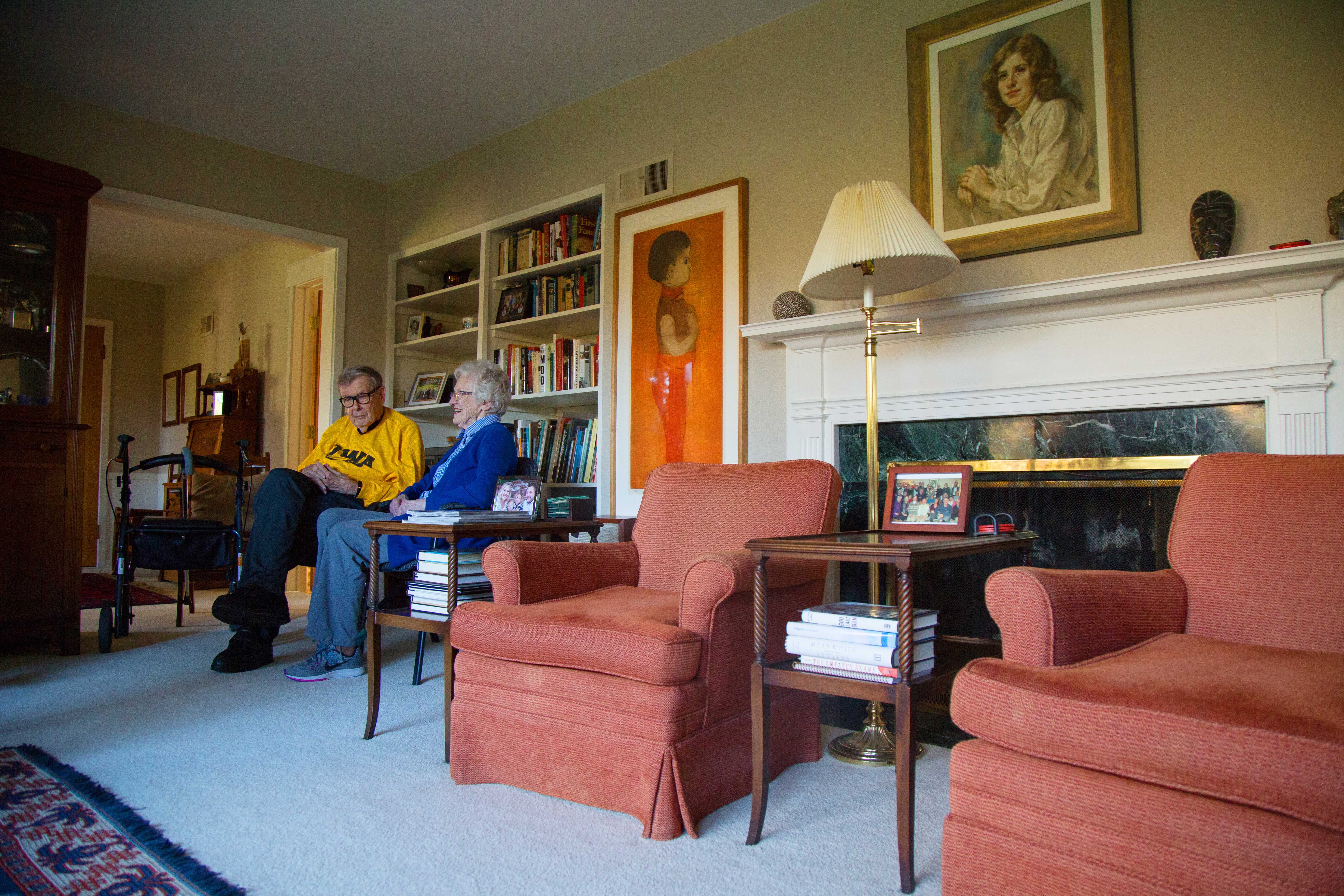 In 1954 he was a practicing lawyer in the Twin Cities. In that year, he proposed to Susan, a journalist in the city. That Friday they had dinner, reminiscent of their first, blind meeting.
In 1954 he was a practicing lawyer in the Twin Cities. In that year, he proposed to Susan, a journalist in the city. That Friday they had dinner, reminiscent of their first, blind meeting.
They were to begin their lives together for what they thought would be forever in St. Paul.
The next morning administration from the UI gave Sandy a call.
In the present, Sandy Boyd leans forwards in his orthopedic chair, his back to the living room’s wide window.
“I decided, seeing the campus, I didn’t want to take the job.”
The statement is surprising; only a week before this conversation the current law dean, Gail Agrawal, told me, seated in the Boyd Law Building, that he was an exemplary teacher.
“A senior associate at my firm in Minneapolis, though, told me that I didn’t know it, but I would take the position.” At that time, Sandy had yet to refuse.
Boyd, now 89, shrugged stooped shoulders beneath his green pullover. “I’ve learned that something you don’t like to do is something you ought to do,” he said.
A cell phone rings from the front pocket of his walker. He opens it. I used the moment to peek at the notes in my spiral book. After a few beats I glance up; he had already quieted the flip phone, giving me undivided attention.
* * *
“You could have come to him for advice before even saying you were a journalist, and he would invite you in.”
Professor Arthur Bonfield sat forward, hands on his knees. A clock tolled in his polished Oaknoll Retirement Community apartment. Before respective retirements, Boyd and Bonfield had offices diagonal from each other, attempted tennis lessons, and — sun or snow — walked together on breaks from teaching.
“We talked about everything then; philosophy, arguing about ideas,” Bonfield said in his deep Brooklyn accent. “That’s key — he was an intellectually oriented guy. But he is also a pragmatist. Principle alone is important, but he knows you have to get things done. Sandy got things done.”
Like what, I ask. From the look I got in response, an answer is not so succinctly quantifiable.
“He induced me to write an article for the Iowa Law Review proposing Iowa civil-rights legislation,” Bonfield said. “That got lots of publicity, and I ended up drafting and creating the Iowa Civil Rights Commission. I have always been grateful to him because he got me into real-world law reform.”
Professor Arthur Bonfield relates a memorable prank by Sandy Boyd.
Sandy claimed his time as the adviser to the Iowa Law Review was the most fulfilling of his long career.
“I don’t think I was that great of a teacher. I was a good teacher, but I had colleagues who were more outstanding,” Sandy said in the natural light of his living room on an October afternoon. “I was always prepared, and I liked students, I enjoyed them.”
It seems that should be a given for a teacher — liking students. But it is precious, finding a teacher who simply enjoys and profoundly believes.
“And I would keep every seating chart,” Sandy said in his Midwestern grate.
“I kept every chart, then gave it out at every 50-year reunion,” he said. He tied them in little bows, in the margins he recalled memories. This student — eventually a regent — had been late for class November morning.
“I showed that note to his son,” Sandy said, teeth bared in a grin. “The son said his dad claimed to never miss a day.”
Sandy, too, used to never miss a day at the office.
“Sandy was a big guy,” said law Professor Bill Hines, a broad-shouldered professor and former dean of the law school. “Around 6 feet tall,” he said, hands resting on his stomach. “He has trouble walking, someone has to bring him, but he’s here with his walker once a week.”
That day, shuffling with his walker he hunches; his ears droop, but his handshake is warm and strong.
“I didn’t think anyone would come to my retirement party,” Sandy said.
It seemed like the start of a joke.
“All my peers are deceased,” he said. “I go to a couple funerals a week. It’s sad in one sense, but I like to think about how we were together earlier, think how much they meant to the university and me.”
I thought of how on every March 29 — his birthday — UI law administration places a birthday cake beneath his metal bust. Students trickle past, slicing a corner, maybe wondering fleetingly why the cake is out. I think of the infinite cycle of students still to pass that bust.
In Boyd’s presence, though, these musings seem irrelevant. His eyes were distant for only a moment; there was nothing more pressing than the present to him.
He pats the air. “I’ve never seen a piece of paper I could throw away, old Daily Iowans. I didn’t grow up in the digital age.”
For such a self-proclaimed pack rat, he and Susan live in a neat home. Its exterior is long and warm red brick, quaintly situated on the corner of a quiet neighborhood. Decorations are thoughtful: a podium from his time at the Field Museum, framed photos of children, grandchildren.
During most of his presidency, they lived in a house only down the street, the only UI president to refuse — for a time — the President’s Residence. Bonfield claimed Sandy was too humble; Sandy said he wanted student organizations to have a ready home for events.
One evening, at the height of the civil-rights turmoil, Sandy was summoned by a knock. A ring of cars circled the Boyd’s front lawn, engines’ low rumble drowning gentle crickets.
“A group of black students were shining their headlights at our windows,” Sandy said from a plush sofa seat in the living room.
“The interesting thing was, instead of blinding me, the street tilted down.” Sandy motioned his hand in downwards sweeping movement, jostling what looks, at a glance, like a Life Alert
necklace resting on his chest.
So the lights flooded the curve and instead, Sandy could see every student’s face, open and angry and scared of a present that de-legitimized their basic rights.
“I invited them into the house,” he said. “And as soon as they got in I said, ‘You know, maybe you should go out and park those cars, we live in a neighborhood and wouldn’t want to get the police out here.’ ”
The next morning — and every morning after — Sandy began fulfilling promises. The campus received cultural centers, including African-American, Latino, and Asian-Pacific houses. They reached an ordinance for fair housing codes. He raised minority scholarship and opened the university to diverse administration, including the UI’s first female provost.
“He had a courage at that time,” Bonfield said. “That I did not understand. The values he had were hard then; they’re hard now.”
Values such as those create change, cause trouble.
“The governor didn’t want me appointed to the presidency,” Sandy said. “The regents said, ‘We are going to have meeting next week, and we’re going to elect you president. Actually, we don’t care if you accept it. We just want the state to know we have enough guts to offer it to you.’ ”
Since then, Sandy tells me, the governor graciously rescinded the hostility. It was not a discouraging opinion, though. He admits only once a few moments of discouragement in his presidency.
“When you’ve got the newspapers and television media editorializing at 10 o’clock that you should be kicked off the campus, no longer president, that gives you a little pressure.”
A small shrug again.
“I felt discouraged, but I didn’t want to quit.”
He just kept fighting. For the students behind the paper’s press, for every generation of Hawkeyes waiting to be born.
* * *
Very early on, Bonfield was emphatic that this was not about him. “This conversation — this article — is about Sandy.”
It became apparent, though, that the way to learn the most about Sandy was through talking with the cherished people in his orbit. At our first meeting, he sped through his career path, uninterested with speaking so thoroughly on the topic of himself.
“I spoke to Peter Crane from the Field Museum,” I said to Sandy. Sir Peter Crane worked as the chairman of the Geology Department with Sandy at Chicago’s Field Museum after Sandy’s 12-year stint as the UI president. 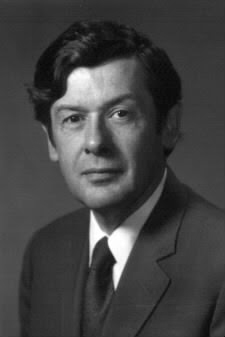
“You talked to Peter?” For the first time since I sat down, Sandy breaks into a smile, shaky and wide. “A remarkable man.”
From there, Sandy walked me with excruciating detail through Crane’s career path; his voice proud and interested like a father. Crane is equally effusive with the praise.
“I owe my career to the 17 years at the Field Museum,” Crane said, his British lilt refined even through the phone. “Sandy was very interested in making sure that we were doing work that people cared about, like how people live together, on a finite planet.”
Traveling the globe and referring to specialists, they built a global exploration through exhibits, but from the perspective of the natives of the country, not that of a scientist. The African and Egyptian exhibits in particular still hold fast to Sandy’s designs, something Crane and most current staff don’t seem concerned about.
The Field Museum is, from the outside, a forbidding museum, columns broad and looming atop sprawling stone steps. “Like a railroad station,” Sandy said. Inside, though, visitors could take a peek at Michael Jordan’s Bulls shoes or navigate a Bolivian jungle.
“Natural history is not a term people relate to; they kind of think it’s a dead zoo,” Sandy said. “And we were dealing with the two biggest issues of the time, the environment and diversity. We wanted to open our doors and welcome all from Chicago in.”
* * *
We had just finished speaking about the future. Sandy was now collecting his experiences in a book — not a memoir, he stressed — ending with his last founding of the Larned A. Waterman Iowa Nonprofit Resource Center. Still running today, it reaches statewide to nonprofits, teaching them practices, guiding a cycle of generosity and return.
Funny, but only towards our last conversation did I remember to ask how he even got the nickname Sandy. Throughout the three months of contact, my mind had made an unconscious shift from Willard, a name given to him after his father, a University of Minnesota professor.
“In my life,” he said, at the kitchen table, during our last talk. “Only two people ever referred to me as Willard.”
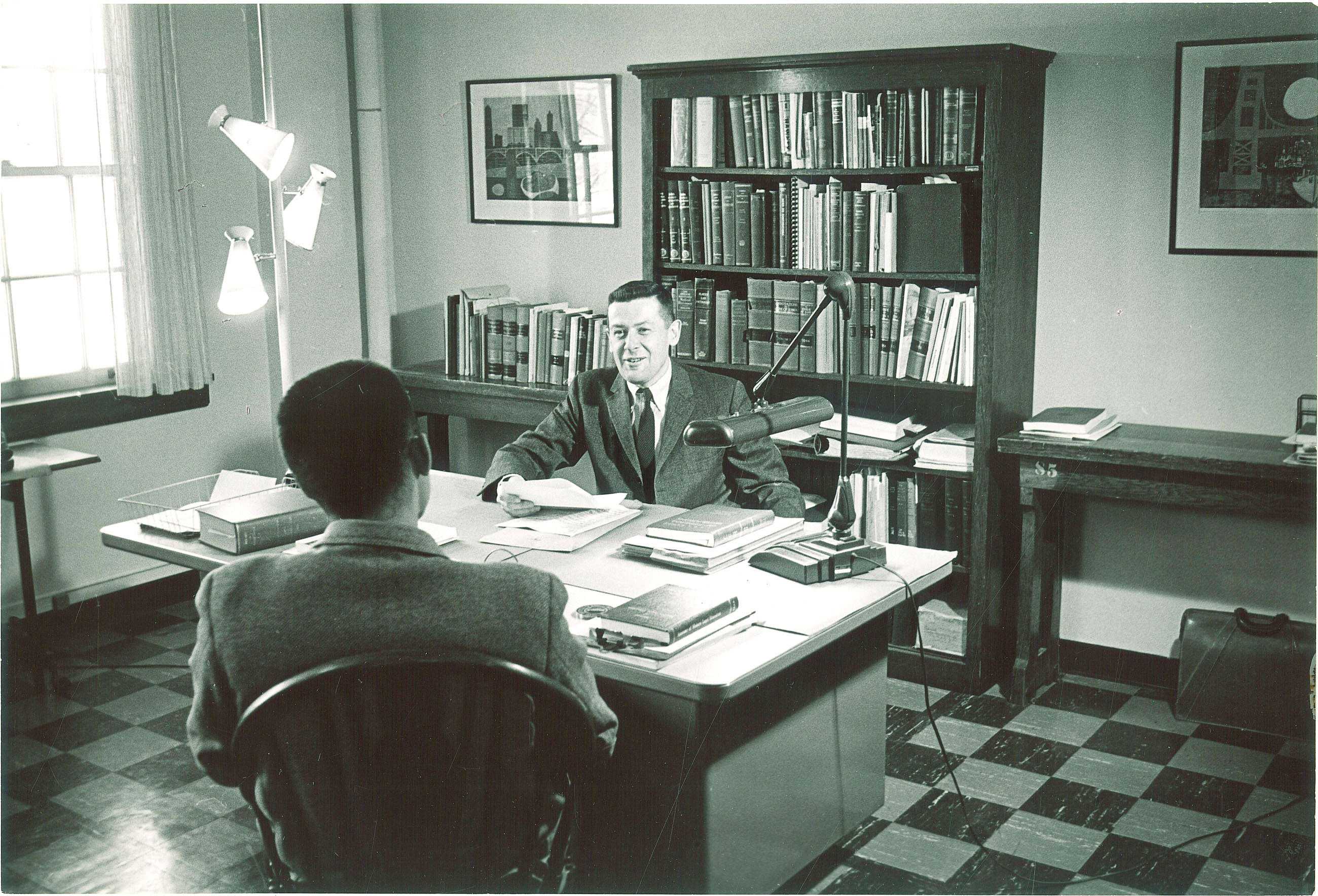 Nearly 90 years ago, his babysitter cradled her infant charge in the crook of her elbow. The sitter rocked the warm bundle by the open window. Strands of silver sunlight trickled through, casting the child’s downy strands the blond of morning beaches far from their home of St. Paul, Minnesota. She nicknamed the boy Sandy, and the name stuck.
Nearly 90 years ago, his babysitter cradled her infant charge in the crook of her elbow. The sitter rocked the warm bundle by the open window. Strands of silver sunlight trickled through, casting the child’s downy strands the blond of morning beaches far from their home of St. Paul, Minnesota. She nicknamed the boy Sandy, and the name stuck.
The thought of him as a child — not yet a lawyer, director, provost, president — prompts: When and why did he become the Sandy Boyd beloved today?
“People mean a lot to me,” he said, more than once. “They said that about my father, they were always glad to see him because he was always glad to see them. It’s important to respect people, It is not enough to tolerate someone.”
We take steps further back into his past.
“When I was a baby, my mom got mad at the Episcopal minister because he wouldn’t baptize me. The people she wanted as godparents could not prove she had been baptized.”
Sandy’s mother left the church, walking across the alley into the neighboring Congregationalist home. He became a Congregationalist, to which he says, “that means I have a very broad ways in which I can think.”
UI Professor Emeritus Marilynne Robinson, a devoid Congregationalist, is mentioned in passing. On the local church’s 150 anniversary, she spoke to the gathering, noting their foremost value of respect.
 A late line from Robinson’s novel Gilead comes to mind, “Light is constant, we just turn over in it. So every day is in fact the selfsame evening and morning.’’
A late line from Robinson’s novel Gilead comes to mind, “Light is constant, we just turn over in it. So every day is in fact the selfsame evening and morning.’’
It fits, imagining Sandy the humble sun of this university’s universe. Indiscriminate in warmth, steadfast in illumination.
There is something frightening about writing about — and meeting — a good person. There is suspicion: When will the faults reveal themselves? Before meeting Sandy, I feared his impressively positive factors amounted to a flat sum; an allegory instead of human who feels and deals frustration. One afternoon talk forced a revelation in my narrow perspective of humanity.
Kindness is not shallow, but one facet in a system of values — respect, honesty, and sensibility — often deemed myth because they are out of reach for so many.
“There are so many truths in this world,” Sandy said to me at his kitchen table. Late afternoon sun shined directly on him. He had been obstinate that I take the seat free of the window’s glare. The warm wood was decorated with woven red placemats, a square vase of snowy spider mums.
“Life is a narrowing experience unless you’re willing to reach out. I didn’t want only one perspective.” Golden rays traveled down his front as the conversation continued.
At the height of the Vietnam protests, students lay like corpses in his front yard. “They have good perspectives now,” he promised. Outside the window trees still a deep green were aglow with flooding light.
“As long as you are alive, there is a new frontier,” Sandy Boyd said.




